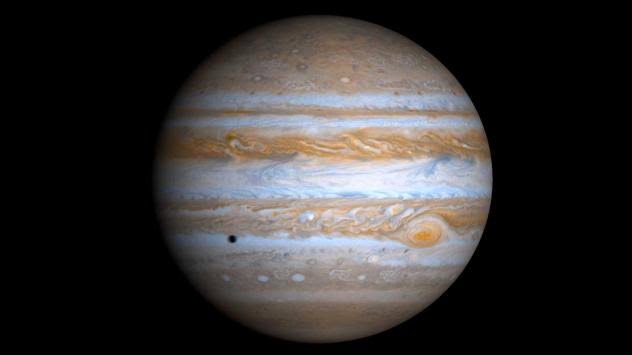
The largest planet, Jupiter in our solar system has been more and more visible lately just after sunset.
How to recognize it and why it might be a once-in-a-lifetime occurrence are explained by Tech & Science Daily.
A 100% electric “flying ferry” has been the subject of design plans.
In order to sail above the waves, the EF-24 Passenger watercraft from Artemis Technologies uses cutting-edge hydrofoil technology to raise the craft out of the water.
When is the encounter occurring?
On September 26, Jupiter will be “just” 367 million miles (591 million km) from Earth, according to scientists, making it appear bigger and brighter.
Just half of that separates the planet from the Earth at its furthest point from us.
According to Dr. Martin George of the International Planetarium Society, Jupiter will be at its closest to the Earth at noon AEST and will become visible when dusk falls.
According to Dr. George, the planet will ascend in the sky throughout the evening (because of the Earth’s rotation), reaching its highest point about midnight before descending into the west as dawn draws near.
What do you mean by Jupiter’s opposition?
Jupiter is now in opposition, making it appear bigger and brighter than it ever has before in the year.
The optimum moment to view a planet is during an “opposition,” when it will be directly across from the sun in the sky.
Each opposition can have a different distance between the two planets since planets don’t have completely circular orbits.
Additionally, this is the closest we will be in decades despite Jupiter and the Earth being in opposition roughly every 13 months.
How is Jupiter going to look seven times bigger?
Outside of the moon, Jupiter is currently the brightest celestial body in the night sky. It’s really simple to find. Simply step outdoors a few hours after dusk, and scan the horizon to the east and upward for the brightest object that doesn’t seem to twinkle like the other stars.
You should take advantage of this occasion to practice using any kind of telescope or pair of binoculars you might have on hand to see if you can obtain a clearer picture and perhaps even make out any of Jupiter’s large moons.
On 26th September, when Jupiter will theoretically be at its closest and brightest but probably not by much, the moment of opposition will officially occur. The planet arises from the very sunset and also goes down as the early morning sun hits the earth.
But right now, you can step outside and enjoy the nicest vista in a few generations. Mark your calendars for the following planetary opposition, which will occur in early December, and include a bright Mars in the sky.
How to watch this celestial event?
Alphonse Sterling, a scientist working at NASA, points out that Jupiter is always clearly visible in the night sky as long as it is not close to the sun and that a casual observer could find it challenging to discern any size variation.
With just a pair of 7×50 binoculars, according to Sterling, he was also able to see the largest moons of Jupiter a few days ago (7 times magnification with a 50 mm objective lens).
The Galilean satellites of Jupiter are the four moons Io, Europa, Ganymede, and Callisto. Galileo Galilei, who made the discovery more than 400 years ago, is credited with coining the word.
To get a clear view without a telescope, you’ll need a technique to hold your binoculars very steadily. So, let’s make the most out of the celestial occurrence.